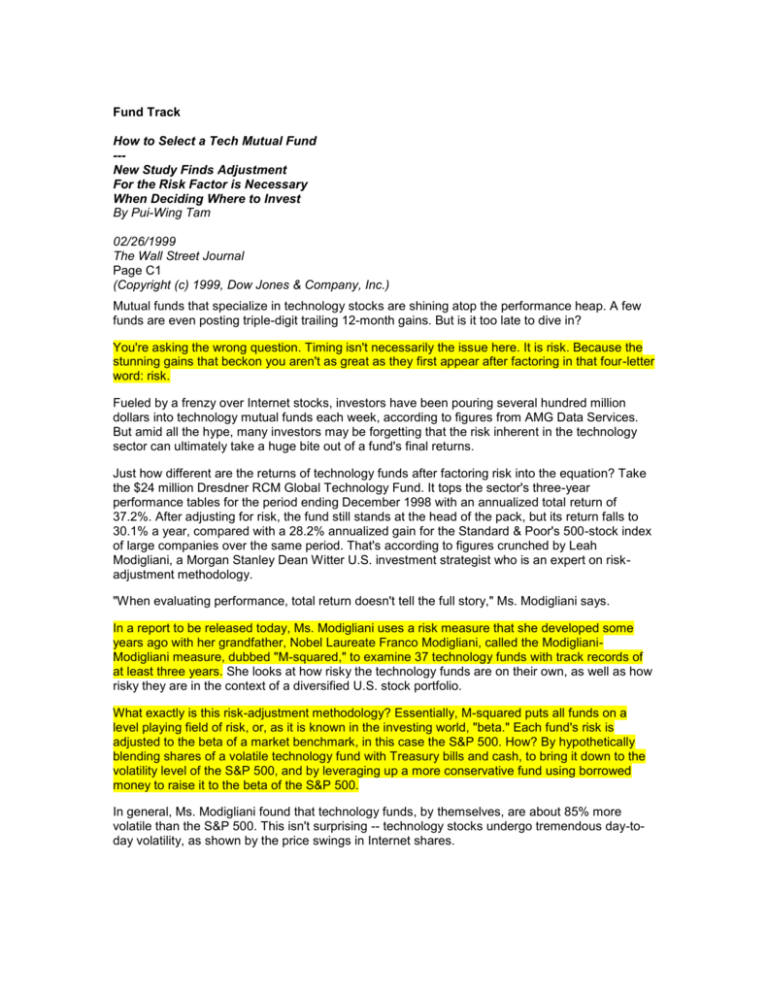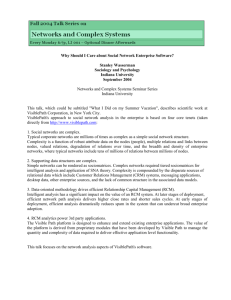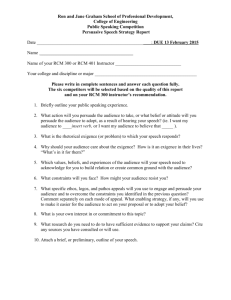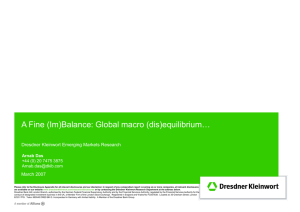
Fund Track
How to Select a Tech Mutual Fund
--New Study Finds Adjustment
For the Risk Factor is Necessary
When Deciding Where to Invest
By Pui-Wing Tam
02/26/1999
The Wall Street Journal
Page C1
(Copyright (c) 1999, Dow Jones & Company, Inc.)
Mutual funds that specialize in technology stocks are shining atop the performance heap. A few
funds are even posting triple-digit trailing 12-month gains. But is it too late to dive in?
You're asking the wrong question. Timing isn't necessarily the issue here. It is risk. Because the
stunning gains that beckon you aren't as great as they first appear after factoring in that four-letter
word: risk.
Fueled by a frenzy over Internet stocks, investors have been pouring several hundred million
dollars into technology mutual funds each week, according to figures from AMG Data Services.
But amid all the hype, many investors may be forgetting that the risk inherent in the technology
sector can ultimately take a huge bite out of a fund's final returns.
Just how different are the returns of technology funds after factoring risk into the equation? Take
the $24 million Dresdner RCM Global Technology Fund. It tops the sector's three-year
performance tables for the period ending December 1998 with an annualized total return of
37.2%. After adjusting for risk, the fund still stands at the head of the pack, but its return falls to
30.1% a year, compared with a 28.2% annualized gain for the Standard & Poor's 500-stock index
of large companies over the same period. That's according to figures crunched by Leah
Modigliani, a Morgan Stanley Dean Witter U.S. investment strategist who is an expert on riskadjustment methodology.
"When evaluating performance, total return doesn't tell the full story," Ms. Modigliani says.
In a report to be released today, Ms. Modigliani uses a risk measure that she developed some
years ago with her grandfather, Nobel Laureate Franco Modigliani, called the ModiglianiModigliani measure, dubbed "M-squared," to examine 37 technology funds with track records of
at least three years. She looks at how risky the technology funds are on their own, as well as how
risky they are in the context of a diversified U.S. stock portfolio.
What exactly is this risk-adjustment methodology? Essentially, M-squared puts all funds on a
level playing field of risk, or, as it is known in the investing world, "beta." Each fund's risk is
adjusted to the beta of a market benchmark, in this case the S&P 500. How? By hypothetically
blending shares of a volatile technology fund with Treasury bills and cash, to bring it down to the
volatility level of the S&P 500, and by leveraging up a more conservative fund using borrowed
money to raise it to the beta of the S&P 500.
In general, Ms. Modigliani found that technology funds, by themselves, are about 85% more
volatile than the S&P 500. This isn't surprising -- technology stocks undergo tremendous day-today volatility, as shown by the price swings in Internet shares.
The good news: When a technology fund is placed in the context of an overall U.S. stock
portfolio, the funds on average appear slightly less risky. Ms. Modigliani found that as part of a
diversified portfolio, technology funds are only 35% more volatile than the S&P 500.
The results should caution investors about the dangers of putting all their eggs in one basket. In
other words, if an investor stuck all his money into one average technology fund, he would likely
be subject to volatility 85% greater than the S&P 500. But if an investor bought a technology fund
to augment a wider-ranging portfolio, some of that technology fund's risk would be diversified
away. As a result, measured by beta, the technology fund would on average be just 35% more
volatile than the S&P 500.
How do individual technology funds stack up? As most tech funds take on more risk than the S&P
500, their returns were accordingly lowered when risk was taken into account, Ms. Modigliani
found. Just as the total returns of Dresdner RCM Global Technology Fund dropped, so do many
of the other top-performing tech funds.
Some other examples: Fidelity Select Computers, a portfolio with $2 billion under management,
produced a three-year annualized return of 36.7%, but when adjusted for risk, the return dropped
to 29.3%. Still, that was enough to make it the sector's second-best performing risk-adjusted
fund.
Pimco Innovation, with $865 million in assets, produced a three-year annualized risk-adjusted
return of 25.9%, down from 34.2% before the adjustment. And Fidelity Select Electronics, with
$3.4 billion in assets, generated a risk-adjusted gain of 25%, down from 34.7%, the biggest drop
among the top five funds.
In contrast, Franklin DynaTech Fund is managed relatively conservatively. While the $400-million
fund produced a three-year annualized return of 23.4%, its risk-adjusted return actually rises, to
28.9%. That's good enough to put the fund in third place in terms of risk-adjusted return, behind
Dresdner RCM Global Technology and Fidelity Select Computers.
Walter Price and Huachen Chen, co-portfolio managers of the Dresdner fund, say they attempt to
manage risk by buying shares across a variety of tech sectors, as well as across country borders.
But they feel that much of the volatility of the tech sector is beyond a manager's control.
"Intuitively, the beta and risk of the tech sector is high," agrees Mike Tempero, Fidelity Select
Computers' manager.
Despite the current individual-investor mania for Internet stocks, most of the top-five tech funds
are mindful enough of volatility to avoid holding large slices of these companies. Matt Grech,
portfolio manager of Fidelity Select Electronics, says Internet stocks "have never been a
meaningful part" of his portfolio. Meanwhile, Dresdner RCM Global Technology Fund has less
than 10% of its assets in pure Internet plays.
"We believe that the Internet is a driving force for technology, but we're selective and buy just the
leaders," says Mr. Price, the Dresdner RCM Global Technology co-manager. "There will be a
major shakeout in that sector" at some point, he warns.
While Ms. Modigliani's study clearly brings the issue of risk to the forefront, John Rekenthaler,
research director at Morningstar Inc., a Chicago fund-research firm, cautions investors to think
about whether they should be investing in technology to begin with. "I'm not sure technology
funds will make as much money over the next 10 years as they have over the past 10 years," he
says.
But Ms. Modigliani counters: "Technology is what America does best." As investors continue to
flock to tech funds, she urges investors to focus not on past total performance but factors
including manager tenure, fees and style. Most importantly, "it's necessary to get a picture of risk
when choosing a technology fund," she declares.
Adds Tracy McCormick, portfolio manager of $2 billion-in-assets Kemper Technology Fund:
"When tech companies are successful, they're home runs. But there's a pretty high failure rate for
some of these firms, too."
MOVING MANAGERS: Two high-rated managers of Boston's MFS Investment Management are
leaving the firm to start their own hedge fund, saying they want the freedom to bet against stocks.
Chris Felipe, manager of Massachusetts Investors Growth Fund, and John Brennan, manager of
MFS Capital Opportunity Fund, had helped MFS hit a hot streak. In particular, Mr. Felipe's fund,
which invests in the large, fast-growing companies that have been leading the market, returned a
sizzling 40% last year, according to Lipper Inc. Bolstered by its strong investment performance,
MFS, majority owned by Sun Life Assurance Co. of Canada, racked up net sales last year of
about $12 billion, among the top in the industry, said Jeffrey Shames, MFS chief executive and
chairman. The company manages about $105 billion in assets.
Mr. Shames said the managers had become more bearish about the market's lofty level and
wanted to be freer to sell stocks short -- or bet against individual companies. That's hard to do at
a mutual-fund company but common practice at hedge funds, which are private investment
vehicles for the wealthy. Stephen Pesek, who oversees the MFS Large Cap Growth and MFS
Core Growth funds, will take responsibility for Massachusetts Investors Growth. Maura
Shaughnessy, who manages the MFS Utilities Fund, will take over MFS Capital Opportunities
Fund.
-- John Hechinger
TO STAY HEALTHY: Vanguard Health Care Fund, the nation's largest sector fund with $10
billion in assets, closed to new subscribers yesterday Vanguard spokesman Brian Mattes
announced. Mr. Mattes said the fund, which is managed by Edward Owens and is designed to
invest only in health-care-related stocks, will enter "a cooling-off period" of at least six months to a
year. The fund has been flooded with cash, leading to fears that it may now be loaded with too
much "short-term, speculative money," according to Mr. Mattes, who said there are no plans to
create a clone health-care fund.
-- Pui-Wing Tam
--Technology Funds: Worth the Risk?
By putting funds on a level playing field of risk, the
Modigliani-Modigliani, or M-squared, measure finds most, but not all,
top funds deliver less than at first glimpse
Fund Name
Avg. Annual
M-Squared
Total Relative
Total Return Risk-Adjusted
Risk, compared with
(3 yrs.)*
Return Beta
S&P 500 Index
Dresdner RCM Global Tech.
+37.2%
+30.1%
1.29
165
Fidelity Select Computers
+36.7
+29.3
1.33
204
Franklin DynaTech A
+23.4
+28.9
0.77
99
Pimco Innovation A
+34.2
+25.9
1.44
190
Fidelity Select Electronics
+34.7
+25.0
1.56
210
1.00
100
S&P 500 Index
+28.2
+28.2
*Based on monthly returns: Jan. 1996- Dec. 1998
Source: Morgan Stanley Dean Witter
--FUND PERFORMANCE DERBY
How the Biggest Funds in the Category Performed
----------TOTAL RETURNS-----------TOTAL
Y-TO-D
1 YEAR
3 YEAR
5 YEARS
ASSETS
12/31/98
2/24/98
2/23/96
2/24/94
($ BIL.) 2/24/99
2/24/99
2/24/99
2/24/99
Stand Ayer Wood:Intl Fxd
$1411.7 +1.64%
+ 8.75%
+ 41.71%
+ 56.84%
T Rowe Price Int:Bond
941.0 -4.59
+ 7.15
+ 14.02
+ 36.33
SEI Inst Intl:Intl FI;A
603.2 -5.30
+ 9.72
+ 14.19
+ 43.09
PIMCO:Foreign Bd;Inst
509.7 +1.14
+ 8.42
+ 44.22
+ 66.61
GMO:Curr Hgd Intl Bd;III
367.0 +0.09
+ 4.19
+ 48.89
CG Cap Mkts:Intl Fxd
245.3 -4.48
+ 19.91
+ 51.21
GMO:Intl Bond;III 226.0
226.0 -5.96
+2.69
+ 21.72
+ 63.50
Amer Cent:Benm Intl Bond
157.7 -4.90
+ 9.39
+ 12.79
+ 42.79
MAS Fds:Intl Fixed;Inst
146.6 -5.12
+ 9.43
+ 14.14
Scudder Intl Bond
143.5 -2.91
+
+ 9.66
+ 7.88
9.45
--
-+
8.67
Lipper Int'l Income Fund Indx
--3.02
+ 7.86
+ 22.33
+ 40.32
S & P 500 (divs. Reinvested)
-+2.16
+23.42
+100.65
+200.40
Source: Lipper
Copyright © 1999 Dow Jones & Company, Inc. All Rights Reserved.
Insert by Prof. Ken Carow
How the calculation is done
Given Information:
Dresdner RCM Global Tech.
+37.2%
+30.1%
1.29
165
This fund has a beta of 1.29, substantially greater than the market beta of 1.0. To
compare it to the market, we must determine what portion can be invested in the risk-free
rate and what portion invested in Dresdner RCM Global Tech to have the same risk as the
market.
Let x = the percent invested in Dresdner RCM, subsequently (1-x) is the percent
in the risk-free asset.
Note that the beta of the risk-free asset is equal to zero.
(1-x)(0) + x(1.29) = 1.0
Solve for x.
x = 1/1.29 = .78 portion of the portfolio in Dresdner RCM
1-x = .22 portion invested in the risk-free asset
Now calculate your risk-adjusted return:
Dresdner RCM earned 37.2% and the risk-free asset over this 3-year period
earned 5%. The proportions in each asset are calculated above.
.22(5%) + .78(37.2%) = 30.1%







